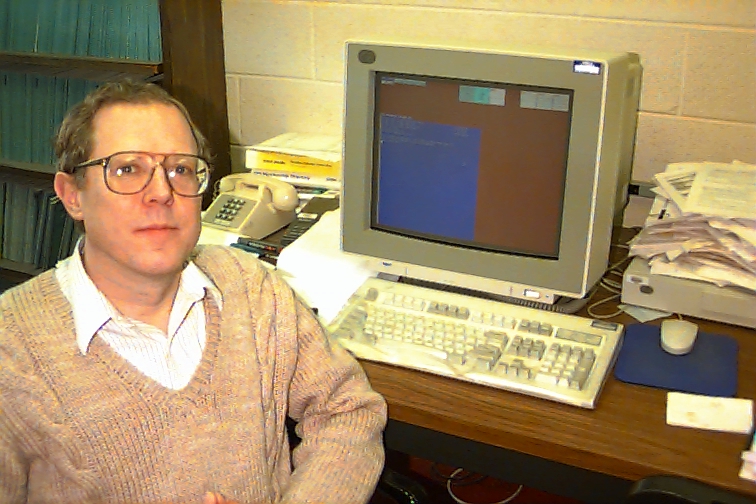
KIN-2D CODE FACT SHEET 
1. Code Name: KIN-2D
2. Category: VIIc. Linear Stability: 2D Kinetic
3. Responsible Physicist: G. Rewoldt
4. Others involved in code development: W. M. Tang, M. Artun, R. Marchand, H. Qin
5. One line description: Comprehensive kinetic eigenfrequency- eigenfunction code for low-n tokamak instabilities.
6. Computer systems which code runs on: Crays, UNIX workstations
7. Typical running time (if applicable): 60 minutes (Cray)
8. Approximate number of code lines: 10000
9. Does this code read data files from another code? No.
10. Does this code produce data files that can be read by another code? No.
11. 1-2 paragraph description of code: The "KIN-2D" code constitutes a solution of the linearized gyrokinetic equation in toroidal geometry, for low radial wavenumbers (k_r rho_bi .lt. 1). It employs a general two-dimensional (r and theta) spatial representation for low-n instabilities such as the toroidal drift mode (trapped-ion and ion temperature gradient modes). It uses a model collision operator which is valid in the banana regime and part of the plateau regime. A Ritz method with cubic B-spline basis functions in the radial direction and Fourier harmonics in the poloidal direction is used to solve the final integro-differential equations. The code computes the linear growth rates, real frequencies, and eigenfunctions. The code includes bounce frequency resonances for trapped particles and transit frequency resonances for untrapped particles of each species, magnetic drift (precession) frequency resonances, and an approximate model for sheared toroidal rotation. The code exists in an electrostatic version using a model toroidal MHD equilibrium with circular, concentric magnetic surfaces. An electromagnetic version (phi and A-parallel only) with the same geometry has recently been developed.
13.Journal References describing code (up to 3): R. Marchand, W.M. Tang, and G. Rewoldt, Phys. Fluids 23, 1164 (1980). W.M. Tang and G. Rewoldt, Phys. Fluids B 5, 2451 (1993). M. Artun, W.M. Tang, and G. Rewoldt, Phys. Plasmas 2, 3384 (1995). H. Qin, W.M. Tang, and G. Rewoldt, Phys. Plasmas 6, 2544 (1999).
14. New code capabilities planned for next 1-2 years:
15. Code users: G. Rewoldt and H. Qin
16. Present and recent applications of code: Investigation of linear growth rates for trapped-ion mode in TFTR in presence of sheared toroidal rotation. Investigation of kink and TAE modes with kinetic effects (cf. 13, H. Qin, et al).
17. Status of code input/output documentation. Check one: (X) does not exist ( ) incomplete ( ) exists
18. Year code was first used and present frequency of use: 1979; occasional.
19. Estimate of Man-Years invested in developing code: ~4 (very roughly)
20. Categories of usage of Code (Check all that apply): (X) application code to do analysis and prediction of experiments (X) numerical testbed of theoretical ideas ( ) physics module to be used in integrated modeling ( ) code for machine design
21. Language code is written in: FORTRAN
22. Results of intercomparisons with other codes and results of validation against experiments: Compared with high-n FULL code for electrostatic toroidal drift modes in W.M. Tang and G. Rewoldt, Phys. Fluids B 5, 2451 (1993); gives reasonable agreement in n = 5 to 10 range where regions of validity for low-n and high-n codes overlap. Comparisons of electromagnetic version with PEST, Nova-K, and FULL (cf. 13, H. Qin, et al); reasonable agreement.